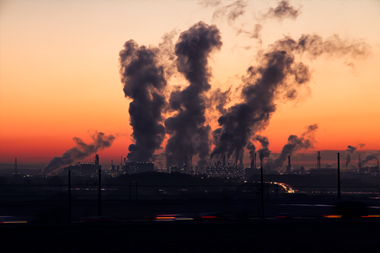Four years ago, the Fourth Assessment Report of the United Nations Intergovernmental Panel on Climate Change (“IPCC”) contained a stern prediction: “Multiple stresses in Asia will be compounded further due to climate change. It is likely that climate change will impinge on sustainable development of most developing countries of Asia.”
The report explained: “Projected sea level rise could flood the residence of millions of people living in the low lying areas of South, Southeast and East Asia such as in Vietnam, Bangladesh, India and China. Even under the most conservative scenario, sea level will be about 40 cm higher than today by the end of 21st century and this is projected to increase the annual number of people flooded in coastal population from 13 million to 94 million.”
Achim Steiner, Executive Director of the United Nations Environment Programme which is a co-founder of the IPCC, agreed: “Unchecked climate change will be an environmental and economic catastrophe but above all it will be a human tragedy. Seven of the world’s most populous countries are located in Asia and future population growth over the next fifty years is projected to increase India, Pakistan and Bangladesh’s populations by 570 million, 200 million and 130 million respectively”.
Between then and now, global investors have had to confront an extraordinary range of unforeseen events, from the earthquake and nuclear accident in Japan to violent revolution in the Middle East and North Africa. At the same time, the investment community is still reeling from the sub-prime crisis, global economic turmoil and continued volatility in Europe’s sovereign debt markets.
Have all these problems taken the focus away from climate change? Far from it. UN Secretary-General Ban Ki-moon recently stated that climate change is a serious threat to international peace and security. Speaking to the UN Security Council in July, he said: “Extreme weather events continue to grow more frequent and intense in rich and poor countries alike, not only devastating lives, but also infrastructure, institutions and budgets - an unholy brew which can create dangerous security vacuums.”
Many of Asia’s emerging markets, in particular, are significant contributors to global climate change, while being simultaneously most exposed to it. It is well known that China, for example, now the greatest emitter of greenhouse gases in the world, is extremely vulnerable to sea level rise, water scarcity and lower agricultural production.
So, climate change remains one of the greatest challenges to be tackled globally. And it is clearly a problem on such a large scale that it can only be addressed by the combined efforts of multiple parties. The weak outcome of the Copenhagen climate talks in 2010 demonstrates how difficult it has been to approach climate change purely at a policy level. In recent years, the business and investment communities have started to come together in their own groupings focused on the issue.
The Institutional Investors Group on Climate Change (“IIGCC”) in Europe, for example, has over seventy members, including some of the largest pension funds and asset managers in Europe, representing around €6 trillion assets under management. Together with its counterparts, the Australian Investor Group on Climate Change and the Investor Network on Climate Risk in the United States, IIGCC seeks to ensure that the risks and opportunities associated with climate change are addressed and reflected in investment practices and decisions. These organisations also bring investors together to use their significant collective influence to engage in dialogues with policy makers, companies and other investors.
To some investors in Asia, the Carbon Disclosure Project (“CDP”) has offered a first taste of collaboration on climate change. By signing up to CDP, they became part of a joint effort to push for better disclosure on climate issues. In 2010, signatories joining the request for information included investors in Korea, Japan, Malaysia, India and Hong Kong, and the questionnaire was sent to 635 companies forming the ex-Japan Asia sample.
However, CDP is only one way in which shareholders can work together on climate issues in the region, and a stronger Asian voice on climate change is essential to compliment perspectives from other parts of the world. The Asia Investor Group on Climate Change (“AIGCC”), initiated by the Association for Sustainable & Responsible Investment in Asia (“ASrIA”), will help to raise the level of understanding in the region around this complex subject, and to facilitate peer to peer learning and cooperation.
Asia is home to eight of the world’s top twenty pension funds and four of the ten largest sovereign wealth funds around the world, and the amount of accumulated capital in the region is likely to continue to increase exponentially while Western markets remain highly volatile. AIGCC will provide a forum for the owners and managers of capital assets to consider the Asia specific risks and opportunities of climate change and the possible ways to mobilise capital towards climate-friendly investments. It will also enable them to consider as a group how best to engage in future discussions with companies and policy makers in the region on climate issues.
AIGCC is currently refining its initial scope of work and identifying founder members of its Steering Committee, which will drive the future work programme. ASrIA will hold a private meeting of asset owners in Hong Kong in September during the ASrIA 10th Anniversary Conference*, in order to present the initiative and to determine the issues of most concern to members.
In the words of Secretary-General Ban, “there can be no spectators when it comes to securing the future of our planet.” Investors around the world know that they simply cannot afford to ignore the positive and negative impacts climate change will have on the value of their investments. Collaborative efforts by them to harness the influence they have as owners of capital will contribute an important element of the solution to this global problem.












No comments yet